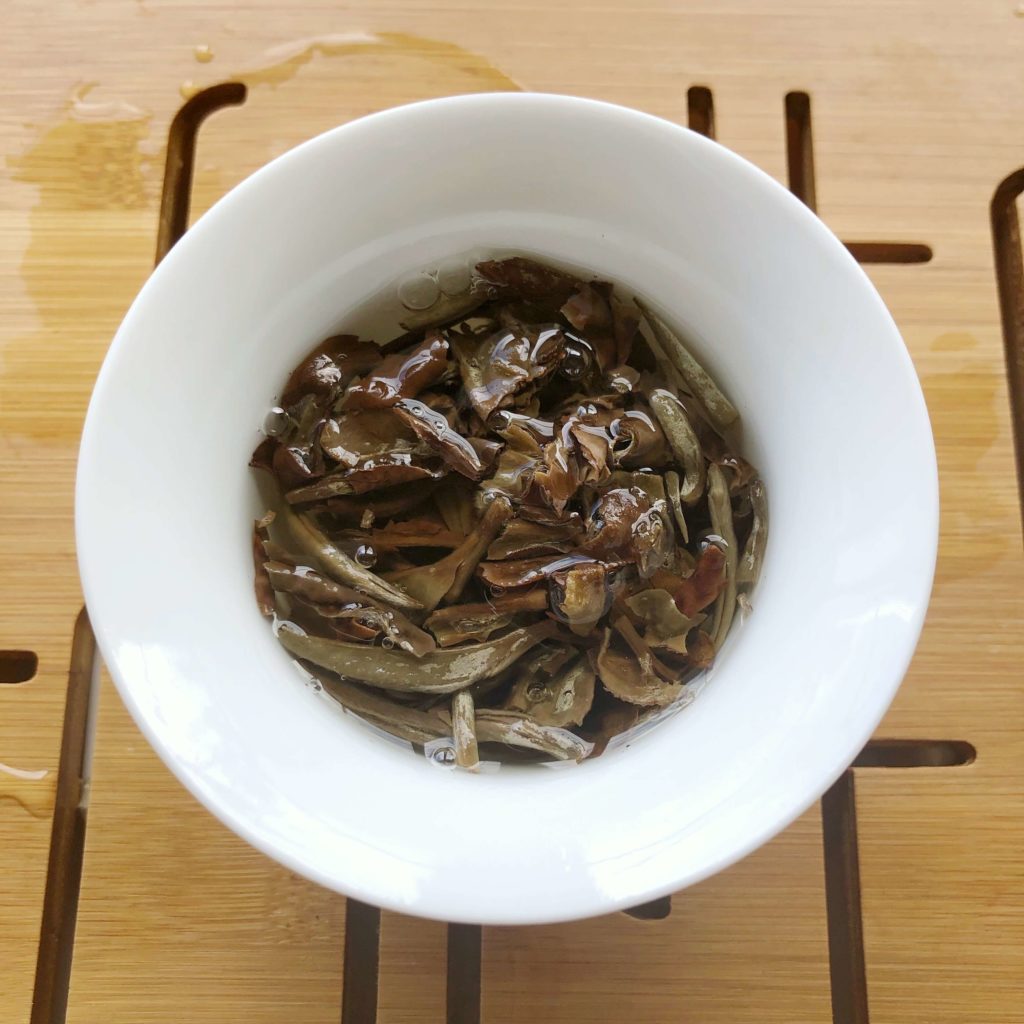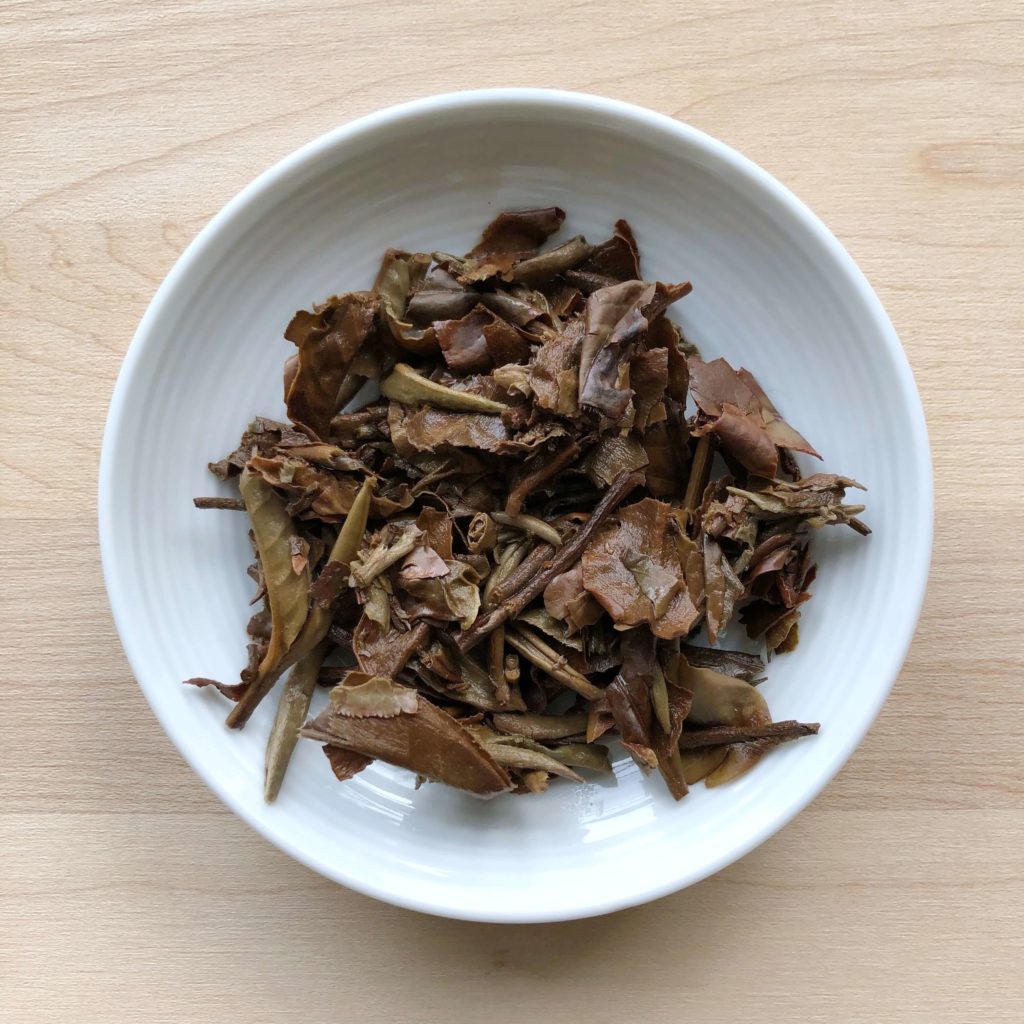
Last week I tasted a pre-portioned pu-er cake, so all I had to do was add water and brew! Therefore, this week I wanted to taste another one, but the white tea variation!
Description: “A bright and floral fresh white tea with a supple sweetness and creamy, heavy body.”
Instructions: 1 g of tea per 15 ml of water in a small teapot or gaiwan. | Rinse once; steep the 1st steep for 5 sec, then add 5 sec for each additional steep[.] | Too weak? Steep longer | Too strong? Remove leaf | White Tea: 85°C
Review: Over the years I have grown to appreciate white teas and more subtle flavours. What drew me to this one was the lovely pressed buds and leaves, in addition to the pre-portioned aspect. The cake was tightly packed and had a marbling of large silver buds and darker tan and brown leaves. The tea ware was pre-heated and I used a 50ml gaiwan.
Pre-warmed gaiwan: After placing the pre-portioned brick into the gaiwan, the warmed cake had a sweet, fruity, wild honey, molasses, and floral smell.
Infusion 1 (5 seconds): After a quick rinse and the first infusion, the liquor was a pale yellow with a faint floral and sweet honey note.
Infusion 2 (10 seconds): While still faint, the liquor carried a mellow floral and hay note. The honey sweetness lingered on the tongue.
Infusion 3 (15 seconds): Some flavour started to emerge like a stronger sweet floral and honey note. An earthy and hay taste lingered at the back of the throat with a bit of astringency.

Infusion 4 (20 seconds): The colour of the liquor was a richer and darker yellow colour but the flavour was still on the mellow side. The dominating notes were sweet honey and floral. Since the cake was still tightly pressed, I used a tea pick to pry it apart slightly.
Infusion 5 (25 seconds): Unsurprisingly the liquor was a darker colour and there was a stronger taste of hay, floral, and fruits. The end of the sip finished with astringency.
Infusion 6 (30 seconds): The liquor was a golden yellow hue with a strong hay and honey character and some lingering astringency. There were also faint hints herbs, vegetables, and cut grass.
Infusion 7 (35 seconds): The golden yellow liquor left a pleasant mouthfeel, however, the flavour was weaker with only faint whispers of fresh flowers, fruits, and honey.
Infusion 8 (40 seconds): The flavour was very faint with only the dryness at the back of the throat remains.

The wet khaki and brown leaves were mostly unfurled and had a strong earthy, woody, hay, and sweet honey smell. It was made of buds, leaves and steams.
I decided to brew the tea using two temperates – boiling, as some people suggest hot water for aged white teas and 85°C since it is what white2tea’s suggested for white teas. I found the boiling water brought out the flavours of the white tea more intensely, but also the astringency earlier.
Regardless of the temperature, I had to pry apart the cake as it was very compressed. This was an additional step I did not have to do with the 2019 pu’er waffle version. Overall, this tea had a nice character and the sweet honey and fruity notes I enjoy in a white tea (3/5 rating).
- Type: White tea
- Origin: Yunnan, China
- Caffeine: Unknown
- Ingredients: Tea
- Company: white2tea
The question of the post: What type of white tea do you enjoy?

1 comment
[…] Examples of white teas are Camellia Sinensis’ Jingning Yin Zhen (pictured above), Moutain Stream Tea’s Sanxia White Tea, and Teakan’s Bai Mu Dan. […]